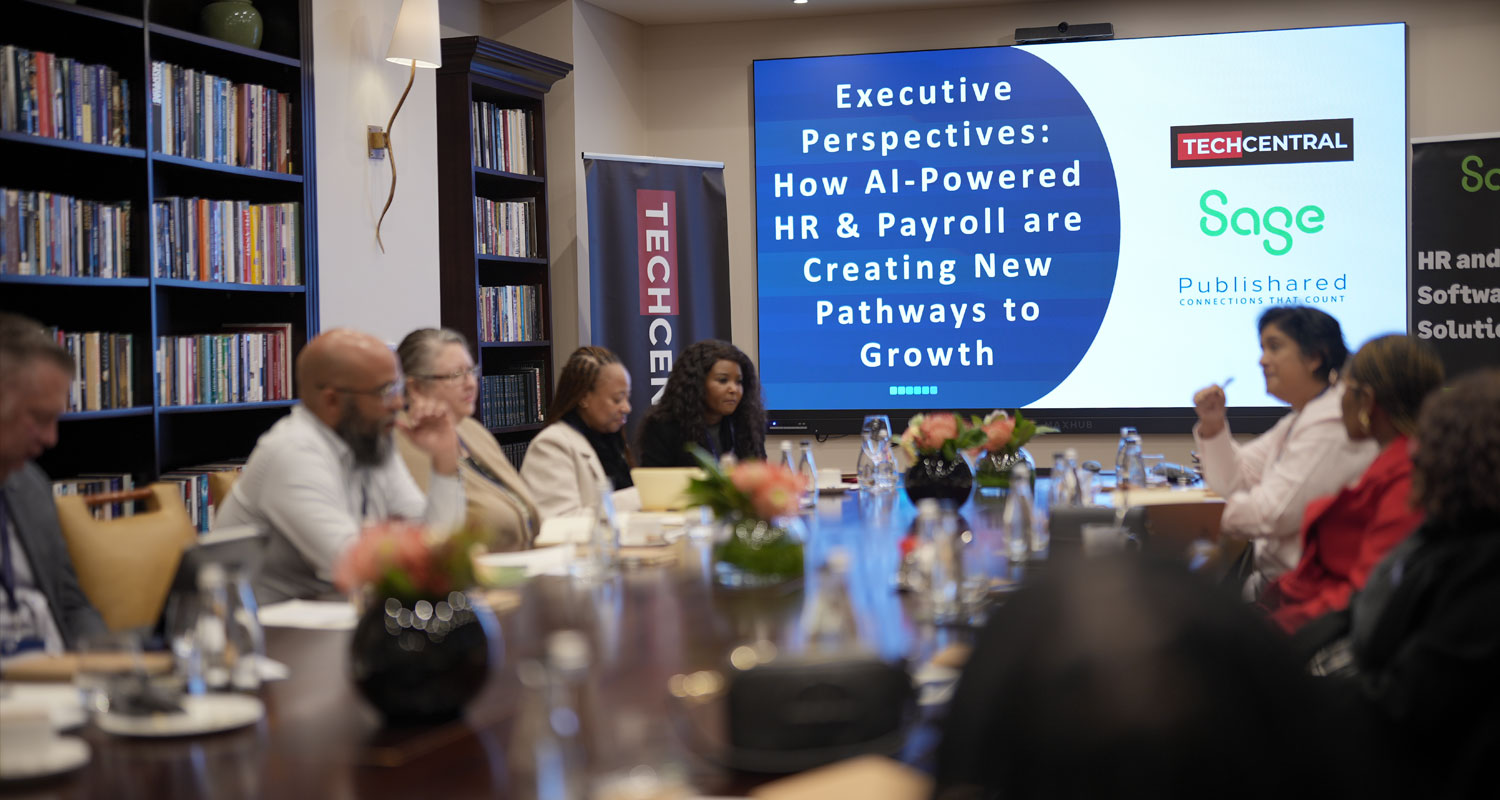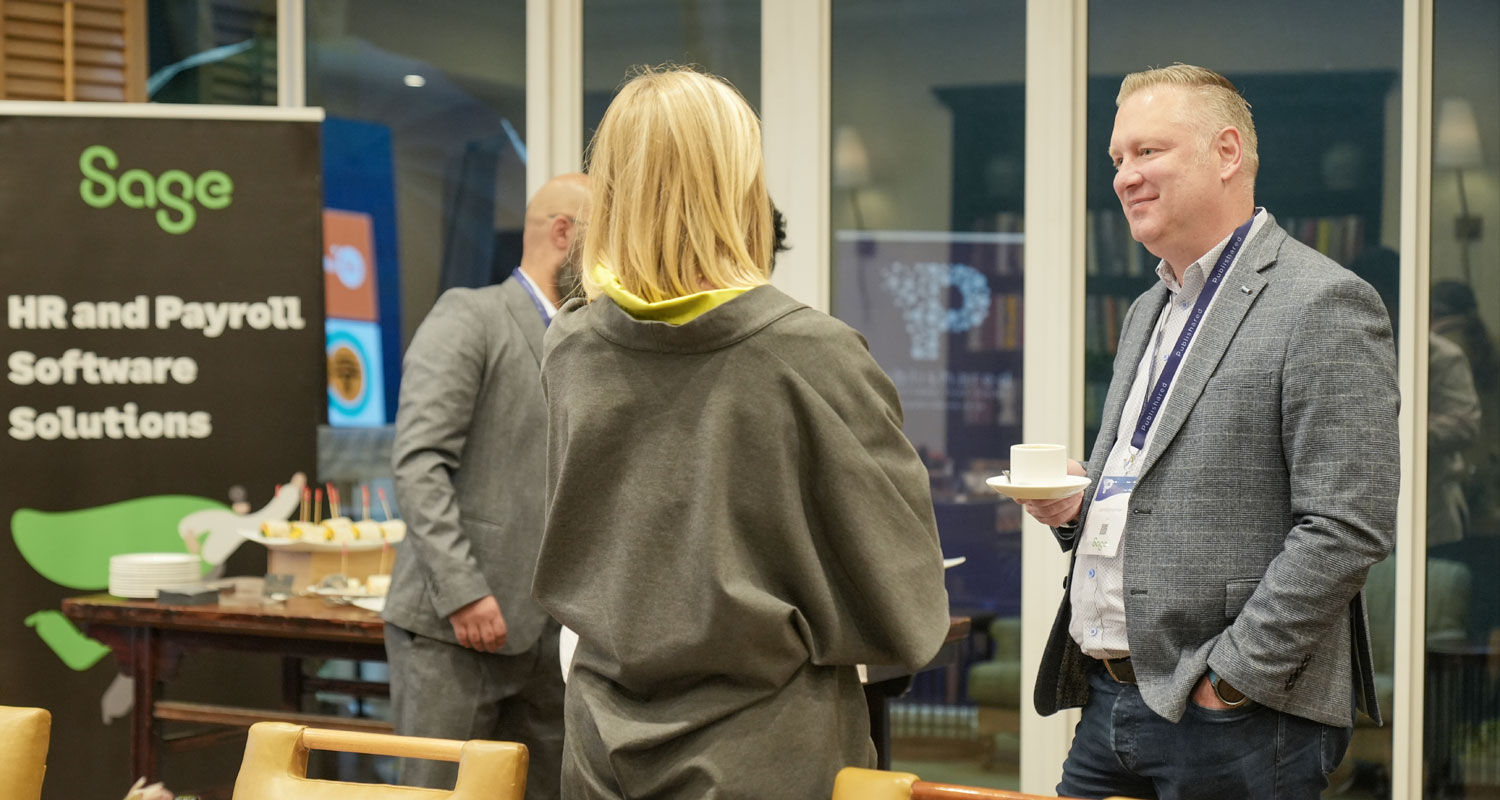As AI reshapes enterprise priorities and talent shortages continue to disrupt growth, HR leaders are being asked to lead with data – or risk being left behind.
At a recent executive roundtable hosted by TechCentral in partnership with Sage, senior HR and business executives gathered in Johannesburg to explore how AI and predictive analytics can transform HR from an operational function into a strategic growth engine.
Moderated by TechCentral, the event brought together HR leaders from banking, retail, mining and professional services. Their goal: to unpack the real role of AI in HR today – its barriers, its promise and what it will take to get it right.
Framed through a “high-road vs low-road” metaphor, the discussion opened with a challenge: will HR remain a back-office cost centre or emerge as a data-informed partner to the C-suite? Many participants acknowledged a gap between HR insights and executive decision-making, often due to a disconnect in language.
The consensus? When HR speaks in terms the CFO and CIO understand – about productivity, retention costs and risk – its influence grows. As Washington Mashanda, sales director for HR and payroll at Sage, explained:
“HR needs to understand the language of business, especially that of finance. When the value of the function can be expressed in rands and cents, buy-in will follow. Enabling systems and aligned processes will help with that.”
This shift from instinct to intelligence is key to securing HR’s seat at the table.
From reactive to predictive
A core focus of the session was how AI and predictive analytics can empower HR teams to move from reactive workforce planning to anticipatory action. Delegates discussed modelling attrition risk, forecasting hiring needs, and using data to predict burnout and engagement levels before they become problems.
However, this transformation requires more than tools. It calls for clear governance, transparency in model use and the cultural readiness to trust technology. Several attendees acknowledged that while the technology exists, the real work lies in change management and capacity-building.
What’s at stake? Without predictive planning, organisations risk losing top talent, over-hiring in uncertainty and missing early signs of workforce disengagement.
 Payroll as an early warning system
Payroll as an early warning system
The conversation turned to payroll – not as a cost function, but as a window into workforce wellbeing. Automation was seen as a means to free up time and reduce error, but also as a way to flag emerging risks. When payroll data is integrated with HR insights, companies can identify anomalies that may point to compliance issues, workload problems or broader organisational health concerns.
As one delegate put it: “We’re sitting in Bentleys with digital dashboards – but we’re still stuck in first gear.”
Rebranding HR, responsibly
Throughout the session, the idea of rebranding HR came up repeatedly – not just in external perception, but in how HR teams see themselves. To be future-ready, the function must evolve from process gatekeeper to strategic partner driving business outcomes.
“The interconnected nature of the function can’t be underestimated,” said Gerhard Hartman, vice president for the medium segment, Africa and the Middle East, at Sage. “It’s important that we as Sage understand the context in which our solutions are deployed and hear, first hand, the challenges our customers face.”
Still, with bold change comes responsibility. Delegates stressed the need for human-centred AI frameworks – models that reduce bias, respect privacy and support rather than replace human insight. This includes reimagining how HR approaches workforce design – not just for today’s needs, but for how roles may evolve over the next decade.
As one participant noted: “Maybe we need to stop being scared.”
Real barriers, shared solutions
Despite optimism, delegates didn’t shy away from the hurdles. Key barriers included:
- A lack of executive mandate for transformation
- Cultural resistance and “AInxiety”
- Persistent perceptions of HR as administrative rather than strategic
- Uncertainty about the ROI of AI and digital investments
Still, the tone was constructive. Many committed to pilot projects, skills development and collaboration beyond the session – proof that alignment is possible when conversations are candid and cross-functional.
The roundtable revealed that predictive analytics is only as effective as the questions HR asks, with payroll offering rich, real-time workforce insights. Trust in AI, alignment with CFO priorities and a shift in leadership mindset were seen as critical to unlocking the full potential of these tools.
 From insight to impact
From insight to impact
This roundtable was part of a broader initiative by TechCentral and Sage to surface honest conversations at the intersection of people, technology and leadership. By inviting voices from across sectors – journalists, solution providers and real-world practitioners – the session became a shared moment of insight.
For Sage, the event reaffirmed its role not as a vendor with tools, but as a strategic partner listening closely to the evolving realities of modern HR. In an era where trust in data, people and purpose matters more than ever, showing up with open ears may be the most impactful innovation of all.
If HR is to lead, it must stop proving its worth – and start shaping what’s next.
To learn more about how Sage is helping organisations build future-ready HR and payroll functions through insight-led conversations and actionable strategy, please contact us or visit www.sage.com/en-za/about-us/contact-us.
To find out more about our executive roundtables, please click here.
Don’t miss:
Sage brings together HR leaders to explore the future of payroll and people management



